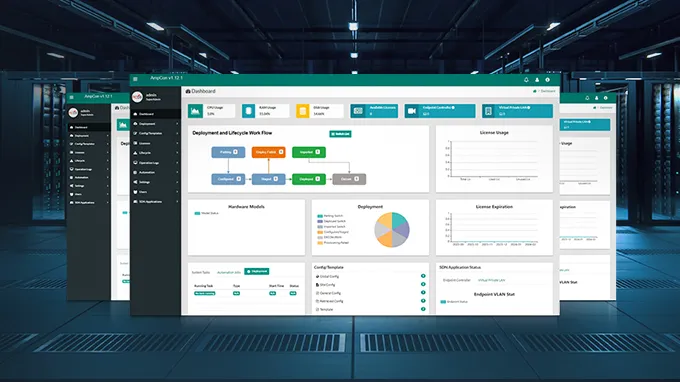What Is Ethernet Cable Frequency and How Does It Matter?
For many people, there is still a lot of confusion about Ethernet cable frequency as it applies to category cables and Ethernet speeds. What is Ethernet cable frequency? What exactly does this mean to your network? Does higher Ethernet cable frequency matter when it comes to different categories of Ethernet cables such as cat5/Cat5e/Cat6/Cat6a/Cat7? Does higher Ethernet cable frequency mean higher bandwidth? In this article, we will get to the bottom of these questions.
What Is Ethernet Cable Frequency?
Ethernet cable frequency refers to the rate at which a network cable transmits signals, usually measured in megahertz (MHz). It indicates the frequency range of signals that the network cable can transmit. For example, a network cable with a transmission frequency of 100 MHz can support a frequency range between 1 MHz and 100 MHz. This means that the network cable can transmit signals from 1 MHz to 100 MHz, while signals beyond this range may be subject to loss or interference. In other words, the Ethernet cable frequency can be regarded as the diameter of a water pipe.
The larger the diameter of a water pipe, the more water it can handle. Each pipe has a different width, and that equates to the amount of data they can carry. The transmission frequency of a network cable is one of the most important indicators of the performance of a network cable. It directly affects the transmission capacity and transmission speed of the network cable, so it is very important for any network system. The figure below shows the transmission frequency of different categories of network cables. Generally speaking, the higher the transmission frequency of a network cable, the higher the maximum transmission rate it can achieve.

Figure: Cat5e/Cat6/Cat6a/Cat7 Cable Frequency
Ethernet Cable Frequency in Different Ethernet Cables
In terms of copper cables, the Ethernet cable transmission frequency represents the basic bandwidth of information transmission provided by the Ethernet cable. To guarantee the network can function at the bandwidth you desire, you have to make sure the Ethernet cable is consistent with the Ethernet application protocols such as 1000BASE-T or 10GBASE-T. The protocols define how fast the network cable can support. The following table shows the Cat5e/Cat6/Cat6a/Cat7/Cat8 Ethernet cables' frequency.
| Catetory | Data Rate Support | Max. Frequency | Max. Transmission Rate | Transmission Distance |
|---|---|---|---|---|
| Cat5e | 10/100/1000Base-T | 100MHz | 1000Mbps | 100m |
| Cat6 | 1000Base-T/10GBase-T | 250MHz | 1000Mbps/10Gbps | 100m/37~55m |
| Cat6a | 10GBase-T | 500MHz | 10Gbps | 100m |
| Cat7 | 10GBase-T | 600MHz | 10Gbps | 100m |
| Cat8 | 25/40GBase-T | 2000MHz | 25Gbps or 40Gbps | 2000 MHz at 30m |
How Does Cable Frequency Matter for Your Ethernet?
Transmission Speed
The transmission frequency of a network cable has a direct impact on the maximum transmission speed that the cable can support. Transmission speed refers to the rate at which the cable can transmit data, usually expressed in bits per second (bps). That is to say, the higher the cable frequency, the higher the transmission rate it can achieve.
For example, Cat6 network cables support up to 250MHz which is more than twice that of Cat5e cables (100MHz), Cat6 speed can reach up to 10GBASE-T Ethernet, whereas Cat5e cables can only support a maximum of 1000BASE-T Ethernet transmission speed. This means that choosing the right type of network cable is critical to the actual transmission speed required.
Transmission Distance
Transmission distance is affected by the frequency the copper network cable supports. Typically, under the same conditions, as frequency increases, so does the transmission distance, and vice versa. Different types of cables have different transmission distances at different transmission frequencies.
Taking Cat6 as an example, although its transmission frequency is 250MHz, the transmission distance can be up to 100 meters with a guaranteed transmission rate of 1000Mbps, while the transmission distance is only 37 to 55 meters with a guaranteed transmission rate of 10Gbps. Therefore, it is crucial to choose the right type and frequency of network cable according to the transmission requirements.
Ethernet Cable FAQs
Is higher frequency better?
The prerequisite is that all devices support high bandwidth transmission. Defined by the standard, the Ethernet cable frequency ensures a certain bandwidth speed is achievable at a certain distance in network cable installation.
Frequency vs Bandwidth
Ethernet frequency defines the number of oscillations of a signal within a unit of time, while ethernet bandwidth refers to the amount of data that can be transmitted within the same unit of time. Although these two concepts are often related, they are not exactly the same. Higher frequency generally allows for higher bandwidth because a higher frequency implies more oscillation cycles, which in turn enables a greater amount of data transmission.
Should I choose Ethernet category cable with high frequency?
It depends on the actual application environment. If your ISP provider just offers you 1Gbps rate, you'd better use Cat5e cable (100 MHz). And you can not expect to achieve 10Gbps even you use 10G Cat6 cable (250 MHz). For more detailed information about different Ethernet cables, you can click Cat5/5e, Cat6/6a, Cat7 and Cat8 Cable Buying Guide.
Conclusion
In summary, Ethernet cable frequency plays a crucial role in determining the performance and speed of data transmission over the network. Ethernet cables are designed to support different frequencies depending on their categories, such as Cat5e, Cat6, Cat6a, Cat7, and Cat8. It depends on specific connectivity requirements to choose the best ethernet cable for your network.
You might be interested in
Email Address

-
PoE vs PoE+ vs PoE++ Switch: How to Choose?
May 30, 2024













